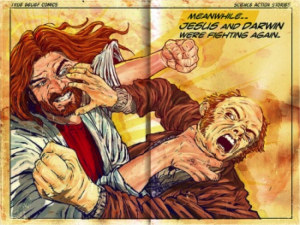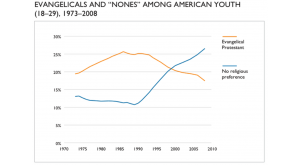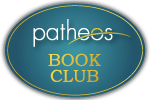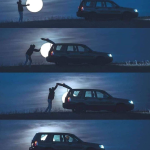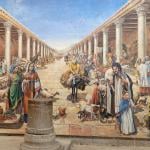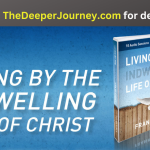I’m a day late and a dollar short with this post, since yesterday was the prime day to enter the fray and offer perspectives on the recent Creation debate.
But hey, I haven’t blogged in awhile, and I have a cool photo to share.
Yeah, that pretty much sums it up. Jesus versus Darwin. The Bible versus the Scientific Method. The authority of Scripture versus the authority of rational thought and empirical observation. Right? (if the above picture is accurate, Jesus clearly has the upper hand).
Ian Barbour’s influential taxonomy of the relation between science and religion includes the well-known “conflict” model. Much of the history of the relation between scientific thought on the one hand, and religious ideas and practice on the other hand, has been characterized by conflict. However, scholars have also shown that this characteristic is far too simplistic. Many of the most important scientists throughout history have been religious people–even theologians and religious philosophers. They often found scientific study to be simultaneously a cause for theological reflection–even worship. And they had a sense for when–and how–to discern what purposes were to be served by the respective sources of science and religion.Galileo, pleading the obvious point that the Bible is not a science textbook) famously quoted the Cardinal Baronius: “The intention of the Holy Ghost is to teach us how one goes to heaven, not how heaven goes.” And even Darwin (despite his own atheism–and despite the above picture) believed the theory of evolution to be compatible with theistic faith.
Alister McGrath’s use of Roy Bhaskar’s metaphor of stratification, or layers of explanation, has helped me to think about the relation between science and religion. To have as complete an understanding as humans possibly can (which is admittedly, surely rather minuscule) we need to honor reality by seeking after truth in all its forms and wherever we can find it. Alan Padgett’s mutuality model of is also helpful. In Science and the Study of God, he writes:
Theological, philosophical and scientific evidence are all relevant to answering important worldview questions, and any attempt to hermetically seal-off these disciplines will lead to incoherence…There is one God (or religious Reality) and one world, which we are all struggling to discover more fully (20).
It is time for Christians to move beyond the “conflict model” and to figure out how to relate their faith in an explicitly integrative way with science, while acknowledging the finitude of our interpretations of Scripture as well as the tentativeness and inherent limitations of science. Neither science nor biblical interpretation or theology becomes the ultimate authority. Rather, this approach pleads for humility and for “mutuality,” or a collegial stance, in which the various spheres of life and learning contribute to a greater understanding of the world in which we live–and of our experience of the God who dwells in our midst. I don’t think either Ham or Nye, in their respective debate positions last night, reflects the collegial model. It’s classic “conflict” all the way down. Either metaphysical naturalism or a tenaciously dogmatic affirmation of the authority of an interpretation of Scripture.
There’s got to be a better way.
This conviction is the motivation behind “Intersections: Science and the Church,” a 24 month grant project at Bethel University funded by the John Templeton Foundation. My colleague, Christian Collins Winn, and I received the grant and we will be embarking on a number of activities, including roundtable workshops for pastors and other church leaders, two large Summit conferences, and church-based adult education courses. We will draw on an inter-disciplinary team of Bethel University (undergraduate and seminary) professors to accomplish the goals of the grant in resourcing churches to engage with tough questions at the intersection of science and Christian faith and theology. Ken Reynhout, who recently received his Ph.D. in the area of theology and science, will be directing the project. I will post a link to the official announcement in coming days.
So let’s get started. It’s time.

